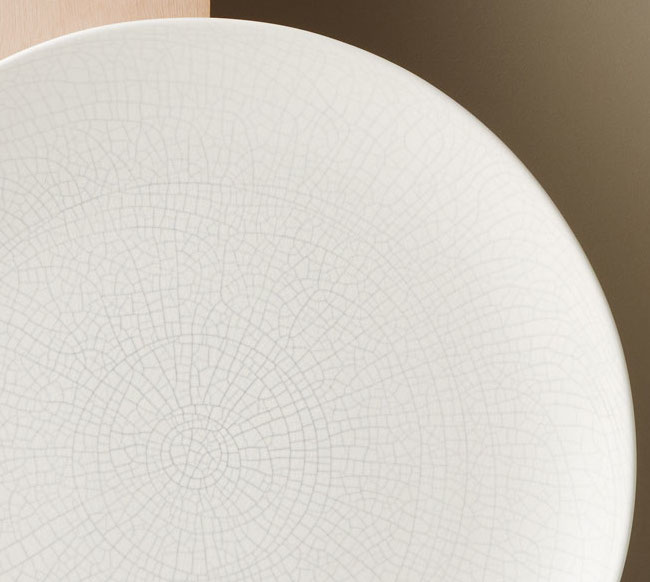Working out of a modest boathouse studio, New Zealand designer Gidon Bing makes sculptural contemporary ceramics based in minimalism that have a foothold in traditional Japanese craftsmanship.
The designer states that many of his objects are formed using techniques such as Japanese wood bending, carving, plaster turning and mould making. These are coupled with more modern practices such as 3D printing and CNC routing. We’re running a gallery of some of his tableware here, maybe you can see the intersection between tradition and tech.


One of the features that stood up and demanded our attention was the cracked glaze on one of the serving plates. We found an interview Bing did with Koromiko where he explained that:
The crackle glaze on some of your ceramics is beautiful, how is it created?
This is derived from a traditional Korean glaze technique called celadon. The physics of it is based on thermal shock and differing contraction rates between the glaze and the clay, causing fractures which are then treated with an oxide contrast agent that highlights and contrasts these small fractures.

Gidon Bing Ceramics are sold and collected worldwide, according to the designer’s web site. New York, Los Angeles, Tel Aviv, Amsterdam, Paris and Copenhagen have exhibited his works. Bing has been featured in Selfridges of London and Milan’s Salone del Mobile among others. The latest collection draws inspiration from the power and presence of reductive forms – a natural extension of Gidon’s sculptural practice, where a fascination with the relationship between biological asymmetry and the artifact is explored.
What do you think of Bing’s minimal contemporary ceramics? Let us know in the comments.



Add your valued opinion to this post.